Dehydrating vegetables is not only an easy task but also a fantastic way to stock your pantry with nutrient-rich, long-lasting ingredients.
Among the various food dehydrator recipes you can make, butternut squash is a standout choice due to its versatility and rich flavor.
In this comprehensive guide, we will walk you through the simple steps of dehydrating butternut squash to help you incorporate it into your meals all year round.
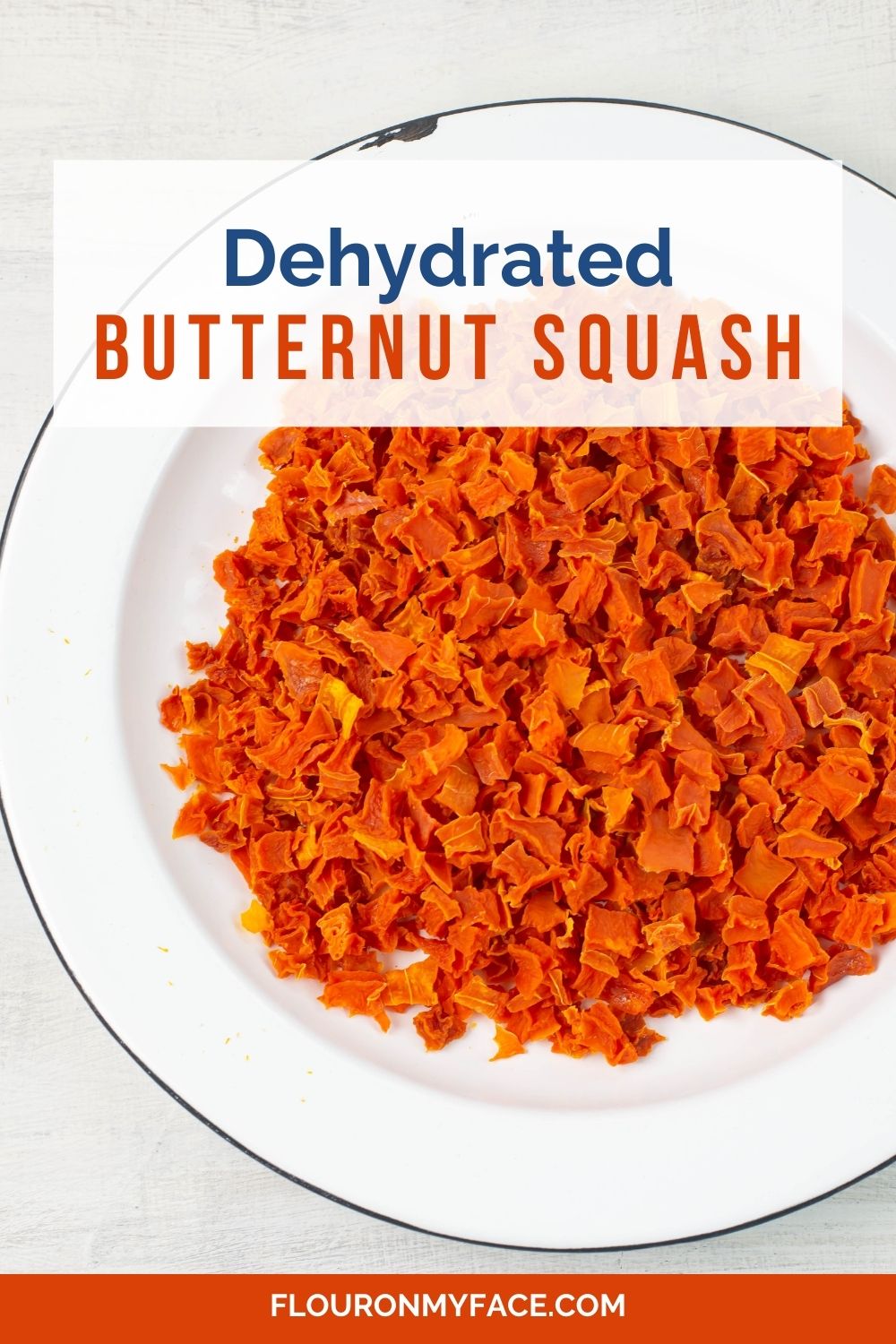
Why Dehydrate Butternut Squash?
Butternut squash is a winter squash variety that is known for its sweet and nutty flavor. Dehydrating butternut squash not only concentrates its flavor but also reduces its water content, making it a perfect ingredient for soups, stews, and casseroles.
Additionally, dehydrated butternut squash is lightweight and takes up less space than fresh or frozen squash, making it an excellent option for stocking your pantry.
Preparing Butternut Squash for Dehydration
Before you start dehydrating, you will need to prepare the butternut squash by washing it thoroughly and removing any dirt or debris.
Then, using a sharp knife, carefully cut the squash lengthwise into two halves and scoop out the seeds and pulp using a spoon.
Next, peel off the skin using a vegetable peeler or a paring knife. If the squash is large cut the halves into smaller pieces that will be easier to peel.
Once peeled, cut the squash into thin slices or cubes of uniform size for even drying.
FREE Dehydrating Guide
New to dehydrating and not sure where to start? Grab my free Dehydrating Quick Guide to get started.
Using a Food Dehydrator
Using a food dehydrator is the most efficient way to dehydrate butternut squash.
Follow your food dehydrator's instructions for slicing or cubing the squash and arranging it on the trays.
Most vegetables are usually cut into thin ¼ thick slices before dehydrating.
The recommended temperature to dehydrate vegetables is 125 degrees Fahrenheit.
Depending on the type of dehydrator you are using and the thickness of the slices or cubes it can take 4 to 12 hours or longer to dehydrate. Rotate the trays periodically for even drying.
Choosing the Right Dehydrator
When it comes to dehydrators, there are a few options to consider.
- Stackable tray dehydrators are perfect for beginners due to their affordability and ease of use.
- On the other hand, box and shelf dehydrators offer more consistent heat distribution and are ideal for larger batches.
When choosing a dehydrator, make sure to look for one with adjustable temperature settings and enough trays to accommodate the amount of squash you wish to dehydrate.
Using an Oven
If you do not own a food dehydrator, you can use your oven to dehydrate butternut squash.
- Preheat your oven to the lowest setting (usually around 170-200 degrees Fahrenheit). Arrange the sliced or cubed butternut squash on a baking sheet lined with parchment paper in a single layer.
- Place the baking sheet in the oven and prop open the oven door slightly to allow moisture to escape.
- Allow the squash to dehydrate for 6-8 hours, checking periodically and rotating the trays if needed.
Ingredients & Equipment
Below is a quick look at the ingredients and directions. You can find the entire ingredient amounts and step by step directions in the recipe card below. P. S. You can also save your favorite recipes to your personal recipe box! ⬇️
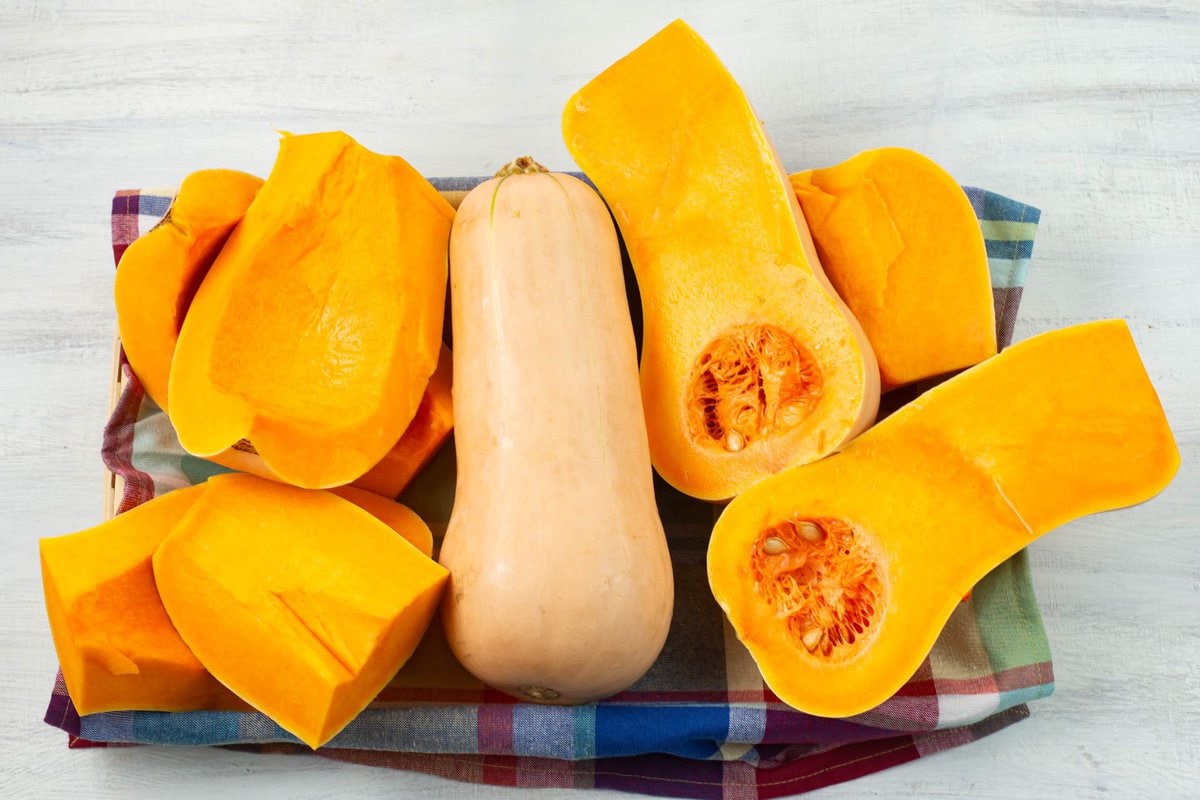
👇See the step by step directions below!
- fresh unblemished butternut squash
- water
Step to Dehydrate Butternut Squash
- Step 1: Start by washing and scrubbing the butternut squash to remove any dirt.
- Step 2: Carefully cut the squash in half lengthwise. Scoop the seeds and strings out and discard.

- Step 3: Cut the squash halves in smaller pieces that will be easier to handle while peeling.
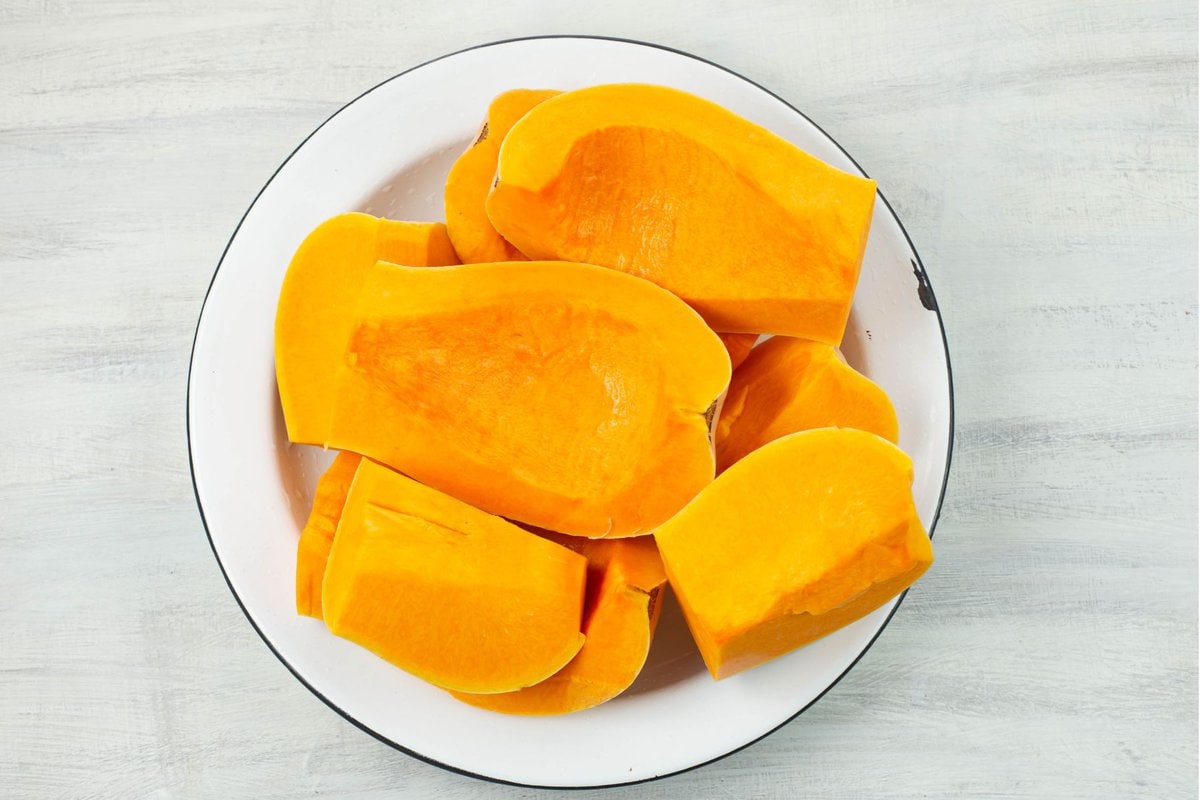
- Step 4: Use a vegetable peeler to peel all of the tough skin off each piece of squash. Trim off any blemishes.
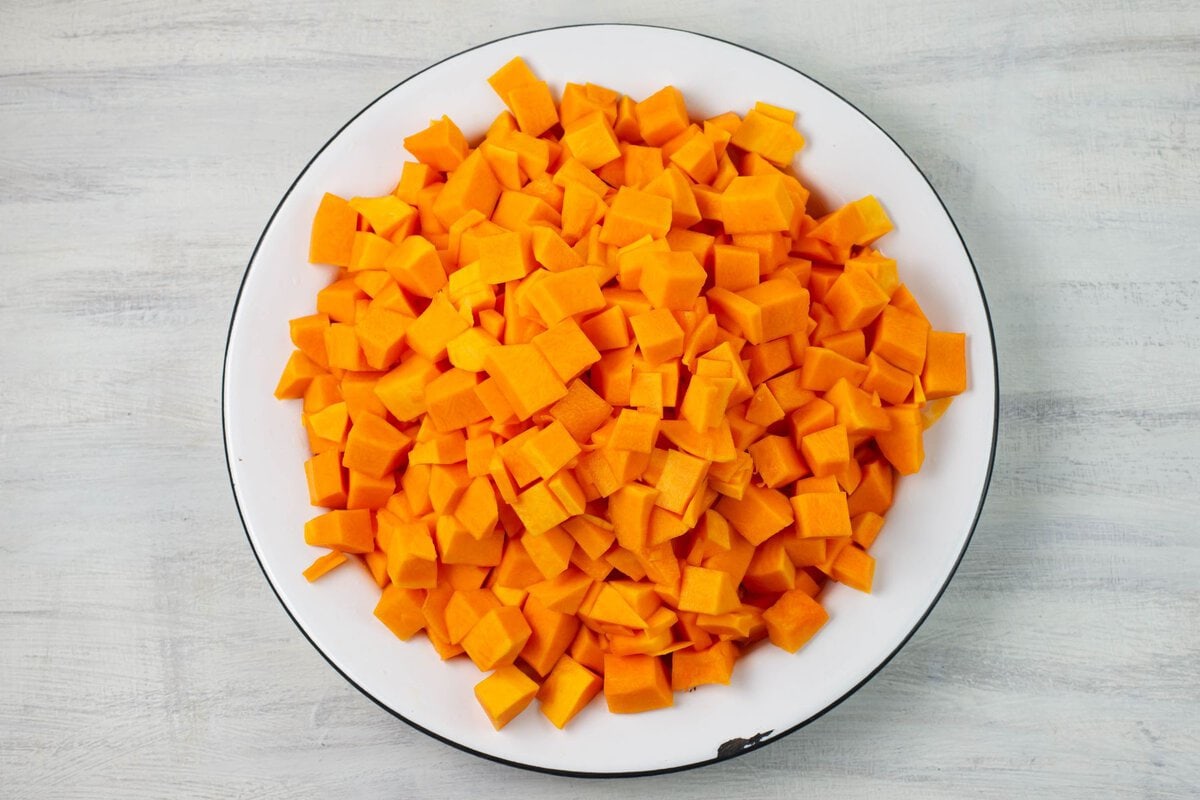
- Step 5 : Cut the squash into large cubes or slice the squash into thin ¼ inch thick even pieces to ensure uniform drying.
I have an inexpensive vegetable chopper that I use whenever I'm making dehydrated carrots, dehydrated onions or dehydrated bell peppers. I bought this model because it will cut three different sizes of diced vegetables. It works great.
Should You Blanch Butternut Squash?
Blanching butternut squash cubes before dehydrating them is a recommended step. This process involves briefly immersing the squash cubes in boiling water and then rapidly cooling them in ice water.
Blanching helps to preserve the color, flavor, and nutritional value of the squash during the dehydration process. It also aids in killing off any surface bacteria and enzymes that could spoil the food over time.
Sliced butternut squash should not be blanched. The thin slices would cook and fall apart.
- Step 6: Blanching cubed butternut squash:
- Cut the butternut squash into uniform cubes for even cooking.
- Bring a large pot of water to a rolling boil.
- Carefully add the squash cubes into the boiling water.
- Boil the cubes for 2-3 minutes.
- Immediately drain the squash and quickly transfer the cubes to a bowl of ice water to halt the cooking process.
- Once the squash cubes are completely cool, drain them again and pat dry before proceeding to the dehydration process.
- Step 7: Arrange the diced squash on the dehydrator trays, ensuring they don't overlap.
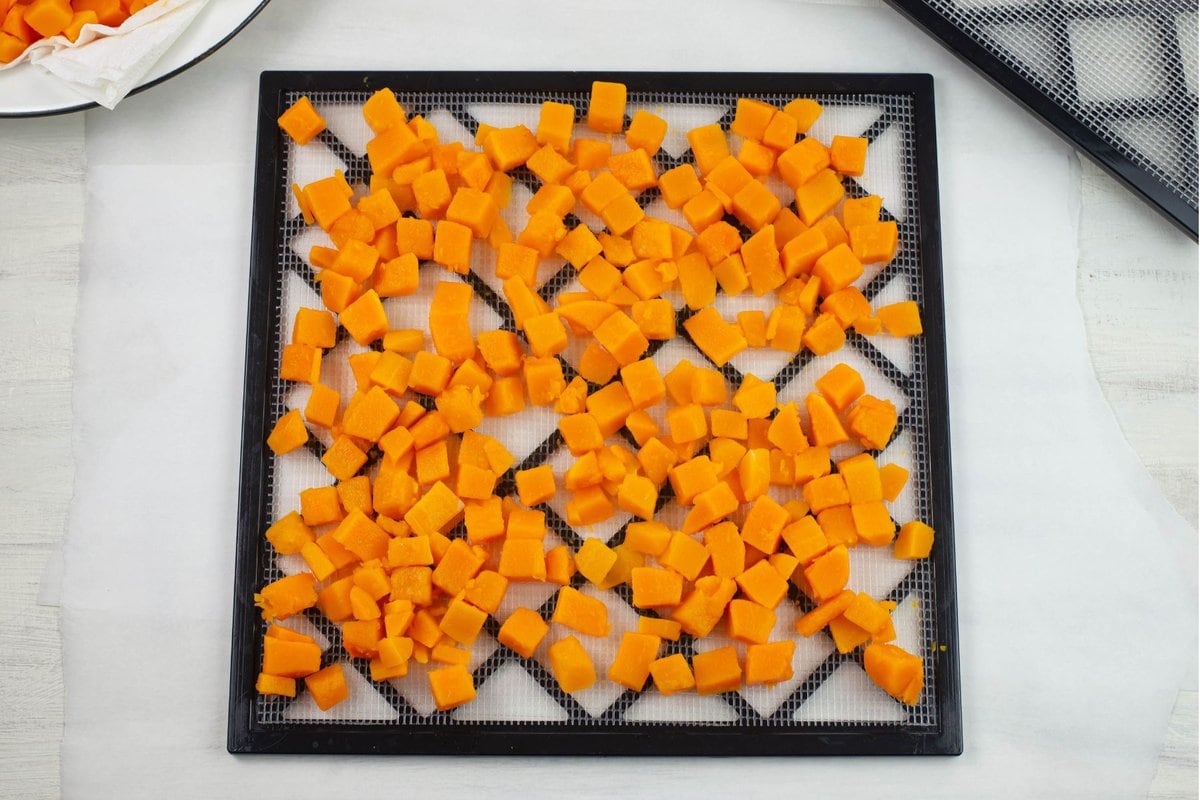
- Step 8 : Set the dehydrator to 125°F (52°C) and let it run for 8-12 hours.
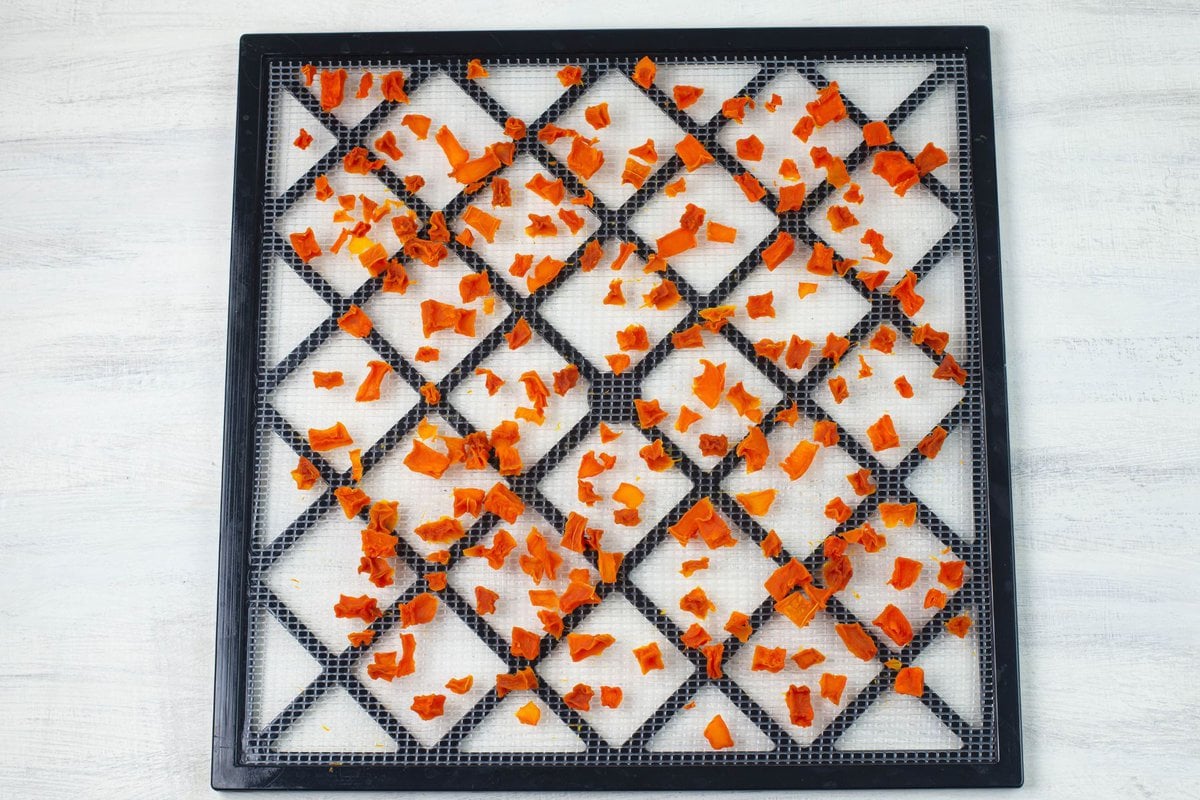
- Step 9: Once completely dry, let the squash cool before storing in airtight containers.
How do you know the butternut is done?
After the butternut squash has cooled down to room temperature and before you are transferring the dried squash into storage containers check to make sure the larger pieces are dried through the center by pressing down or squeezing the pieces.
If they feel cold or squashy remove those pieces and return them to the dehydrator for another hour.
Conditioning Dehydrated Butternut Squash
Conditioning is a crucial back up step that is performed after dehydrating butternut squash to ensure its safe storage.
This process involves evenly distributing the remaining moisture among the dehydrated pieces to prevent mold growth during storage.
Here's how to condition dehydrated squash:
- After the dehydration process, allow the squash pieces to cool at room temperature.
- Transfer the cooled, dehydrated squash into a large airtight glass or plastic container, leaving some space at the top.
- Secure the lid and shake the container a few times each day for one week. This shaking will redistribute the squash pieces and any remaining moisture among them.
- Check the container for any signs of moisture or condensation. If you find any, this indicates that the squash wasn't fully dehydrated and needs to go back into the dehydrator for a bit longer. If no moisture is visible, your dehydrated squash is ready for long-term storage.
Storing Your Dehydrated Squash
Proper storage is crucial to maintain the freshness of your dehydrated squash.
- Glass jars with airtight lids, vacuum-sealed bags, or food-grade plastic containers are all good choices.
- Store them in a cool, dark place for maximum shelf life, which can be up to a year if properly stored.
How to use dehydrated butternut squash
Dehydrated butternut squash can be used in a variety of recipes. It can be rehydrated and added to soups, stews, or casseroles.
Ground into powder, it can be used as a natural sweetener in smoothies or baked goods. It also makes a great snack on its own!
Backpackers, Hikers, and Campers
Outdoor enthusiasts like backpackers, hikers, and campers can find dehydrated butternut squash an invaluable addition to their provisions. Here are some ways they can make use of this versatile ingredient:
- Instant Squash Soup: Carry some vegetable broth packets and mix in the dehydrated squash for a warming, nutritious meal.
- Trail Mix Addition: Add dehydrated squash to your trail mix for a hint of sweetness and a boost of vitamins.
- Camping Risotto: Combine dehydrated butternut squash, instant rice, and a packet of cheese for a decadent yet easy-to-make camping dish.
- Squash Pancakes: Mix dehydrated squash into your pancake batter for a unique breakfast twist.
- Energy Bars: Ground squash powder can be used in homemade energy bars, providing a natural sweetener and nutritional boost.
- Camping Curry: Add dehydrated squash to your favorite lightweight curry mix for an added depth of flavor and nutrition.
Recipe FAQS
No, any dehydrator can be used as long as it can maintain a consistent temperature.
Yes, most varieties of squash can be dehydrated, including acorn and spaghetti squash.
If properly stored, it can last up to a year. However, for the best quality, it is recommended to consume within 6 months.
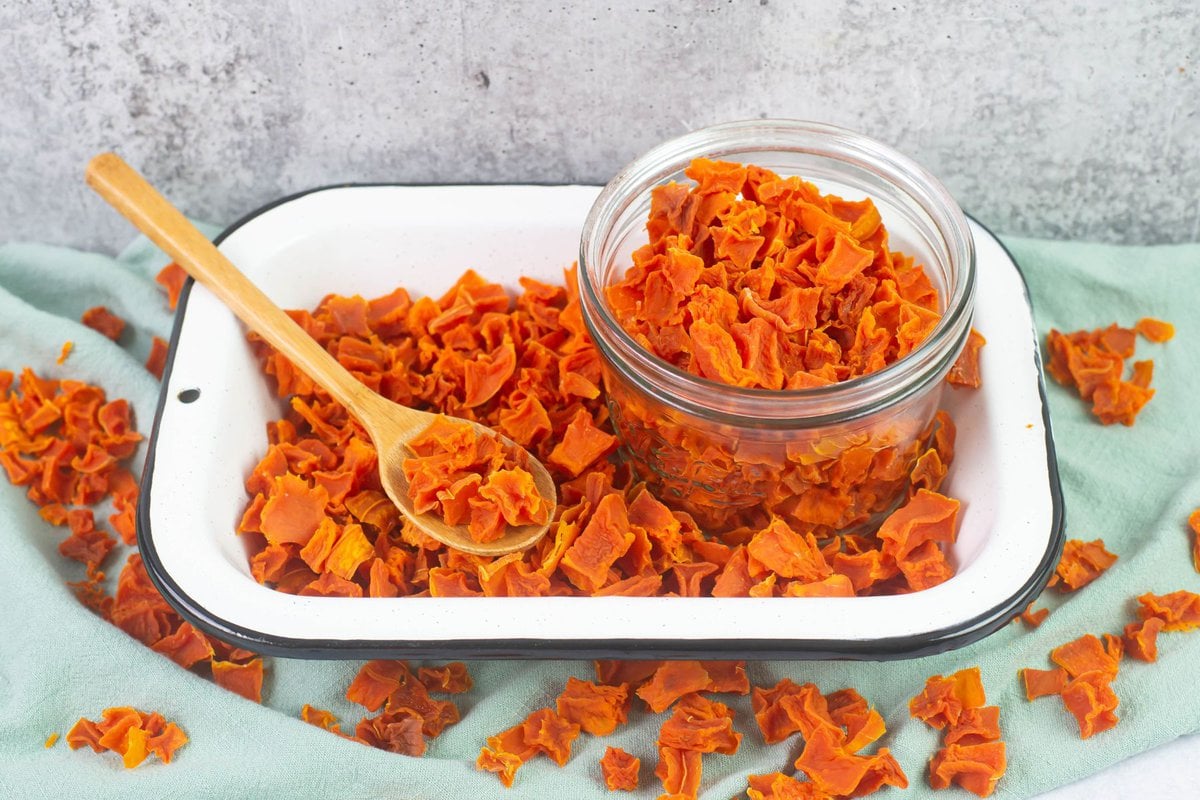
Unlocking the Power of Dehydration
Whether you're looking for a convenient snack, a unique ingredient for your recipes, or a long-term storage solution, dehydrating butternut squash is a versatile and rewarding endeavor. So why not give it a try?
With the proper techniques and storage practices, you can enjoy this delicious and nutritious ingredient all year round.
So go ahead, stock up on butternut squash when it's in season, and start experimenting with different ways to dehydrate and use it.
Your taste buds (and wallet) will thank you! Happy dehydrating!
📌Pro Dehydrating Tips
- Choose the Right Squash: Look for butternut squash that is firm, heavy for its size, and has a solid beige color. Avoid any with cuts, bruises, or moldy spots.
- Dehydrator Settings: The optimal temperature for dehydrating butternut squash is between 125°F and 135°F. Dehydrating at a too high temperature can cause the exterior of the squash to harden while leaving the interior moist, leading to spoilage.
- Proper Storage: Keep the dehydrated squash in airtight containers, away from direct light or heat sources. This ensures the prolonged shelf-life of the product.
- Rehydrating: To rehydrate dehydrated butternut squash, soak it in hot water for about 15-20 minutes or add directly to soups and stews during cooking. For best results, use equal parts of water and squash.
- Different Uses: Dehydrated butternut squash can be used as a seasoning, added to healthy snacks, or incorporated into soups and stews for added texture and flavor.
More Dehydrating Recipes
Discover a world of culinary possibilities, from fruits and vegetables and herbs, as we dive into more dehydrating recipes that promise to fill your pantry with preserved produce.

⭐Leave a Star Rating
Have you tried the recipe? Leave a star rating in the recipe card below to let me know how the recipe turn out.
Email questions or recipe requests to flouronmyface@gmail.com. Follow me on Pinterest, YouTube, Instagram and Facebook.
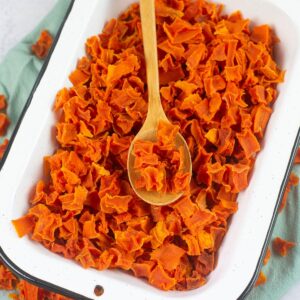
How To Dehydrate Butternut Squash
Equipment
- Mesh Tray Liners
- Storage Jars
Ingredients
- 8 lbs. fresh butternut squash (peeled, seeds removed and diced)
- water
Instructions
Prep the butternut squash
- Wash and scrub the entire butternut squash in cold water to remove any dirt.
- Carefully cut the squash in half lengthwise. Scoop the seeds and strings out and discard. Cut the squash halves in smaller pieces that will be easier to handle while peeling.
- Use a vegetable peeler to peel all of the tough skin off each piece of squash. Trim off any blemishes.
- Cut the butternut squash into large cubes or slice the squash into thin ¼ inch thick even pieces to ensure uniform drying. A vegetable chopper works very well for cubing the squash.
Blanching Cubed Butternut
- Bring a large pot of water to a rolling boil. Carefully add the cubed squash into the boiling water. Boil the cubes for 2-3 minutes.
- Immediately drain the squash and quickly transfer the cubes to a bowl of ice water to halt the cooking process.
- Once the squash cubes are completely cool, drain them again and pat dry before proceeding to the dehydration process.
Dehydrating Butternut Squash
- Arrange the diced squash on the dehydrator trays, ensuring they don't overlap.
- Set the dehydrator to 125°F (52°C) and let it run for 8-12 hours.
- Once completely dry, let the squash cool before storing in airtight containers.
- Check to make sure the larger pieces are dried through the center by pressing down or squeezing the pieces.
- Transfer the cooled, dehydrated squash into a large airtight glass or plastic container.
- Store them in a cool, dark place for maximum shelf life, which can be up to a year if properly stored.
Recipe Expert Tips
- Choose the Right Squash: Look for butternut squash that is firm, heavy for its size, and has a solid beige color. Avoid any with cuts, bruises, or moldy spots.
- Dehydrator Settings: The optimal temperature for dehydrating butternut squash is between 125°F and 135°F. Dehydrating at a too high temperature can cause the exterior of the squash to harden while leaving the interior moist, leading to spoilage.
- Proper Storage: Keep the dehydrated squash in airtight containers, away from direct light or heat sources. This ensures the prolonged shelf-life of the product.
- Rehydrating: To rehydrate dehydrated butternut squash, soak it in hot water for about 15-20 minutes or add directly to soups and stews during cooking. For best results, use equal parts of water and squash.
- Different Uses: Dehydrated butternut squash can be used as a seasoning, added to healthy snacks, or incorporated into soups and stews for added texture and flavor.


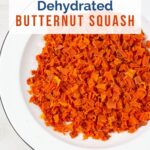


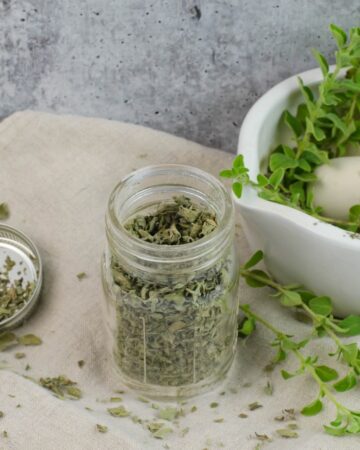
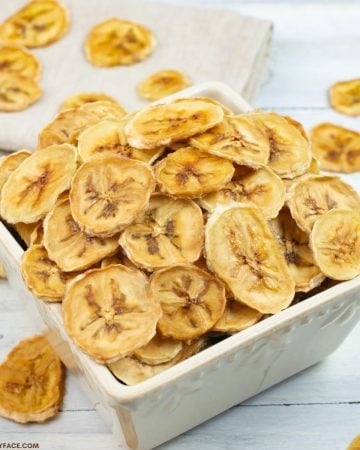
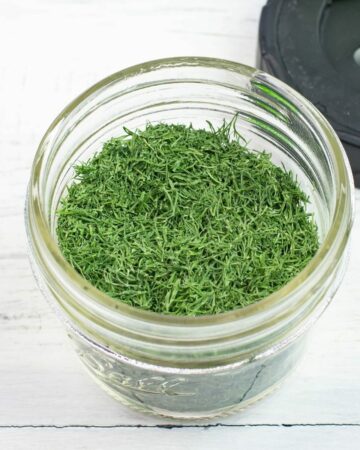
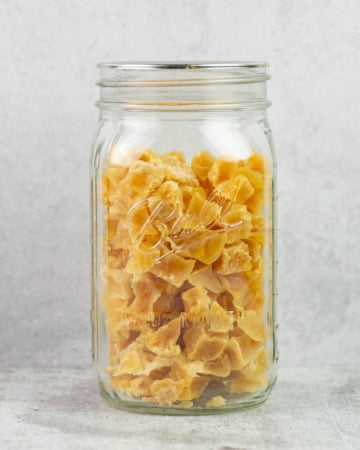
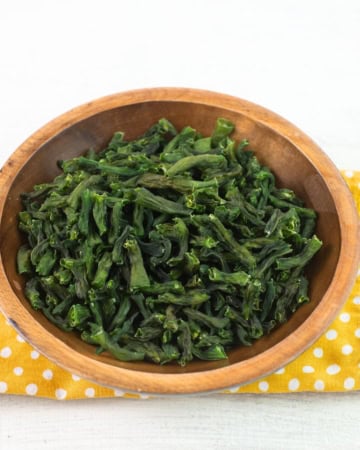

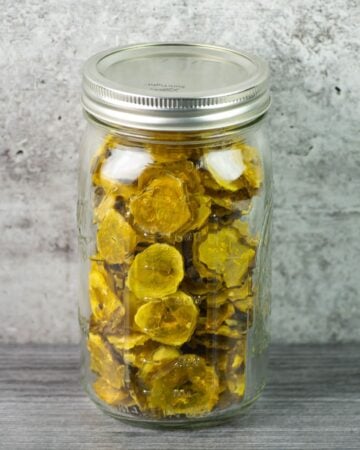
Leave a Reply